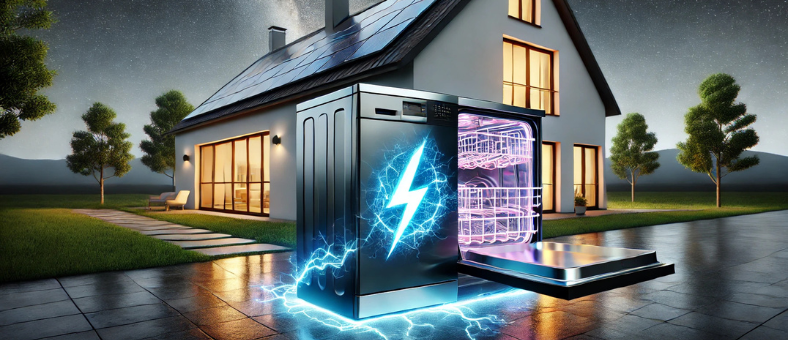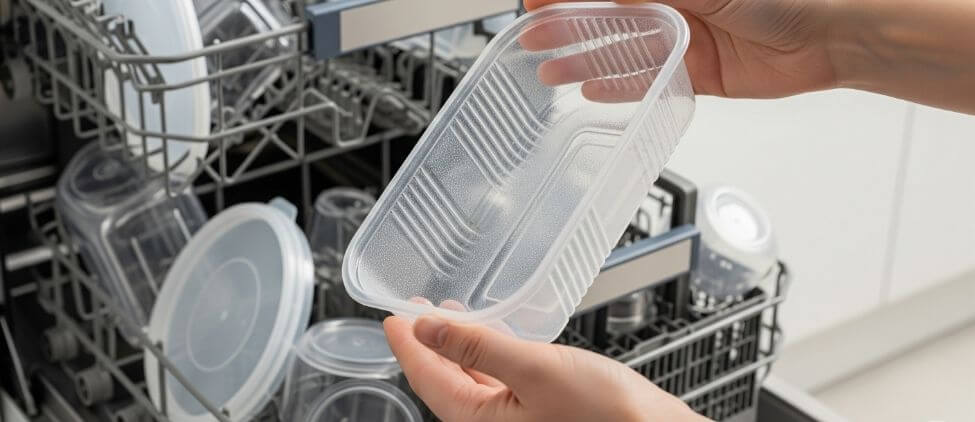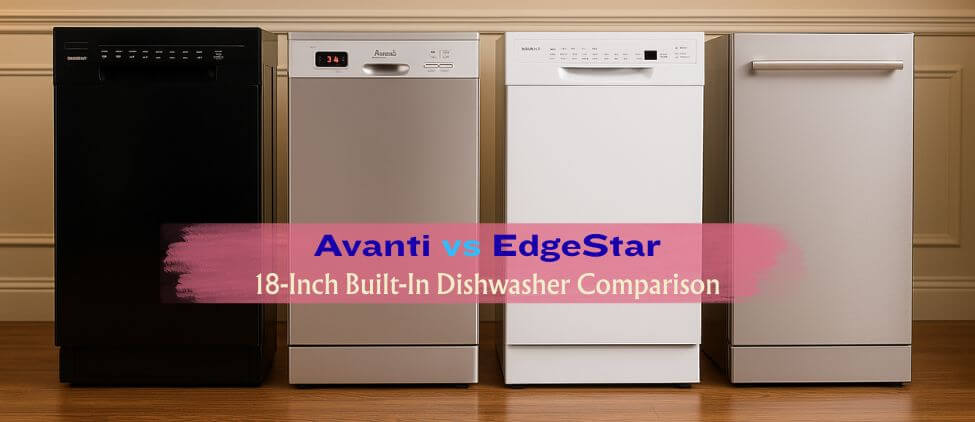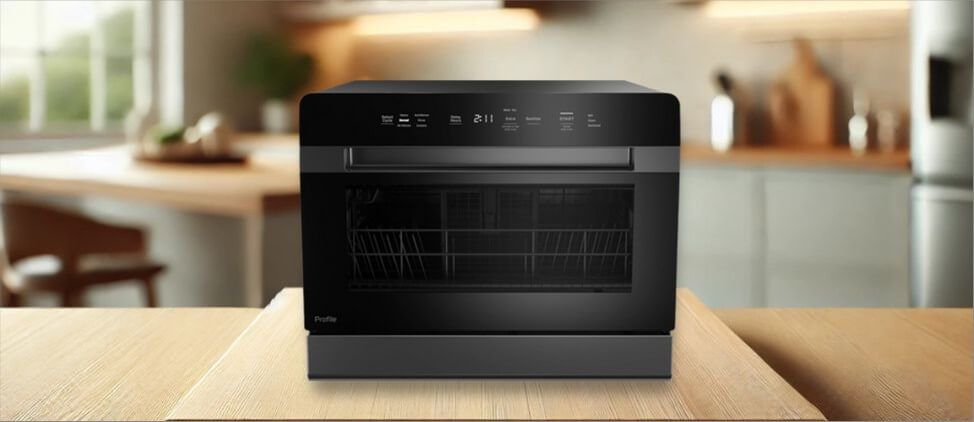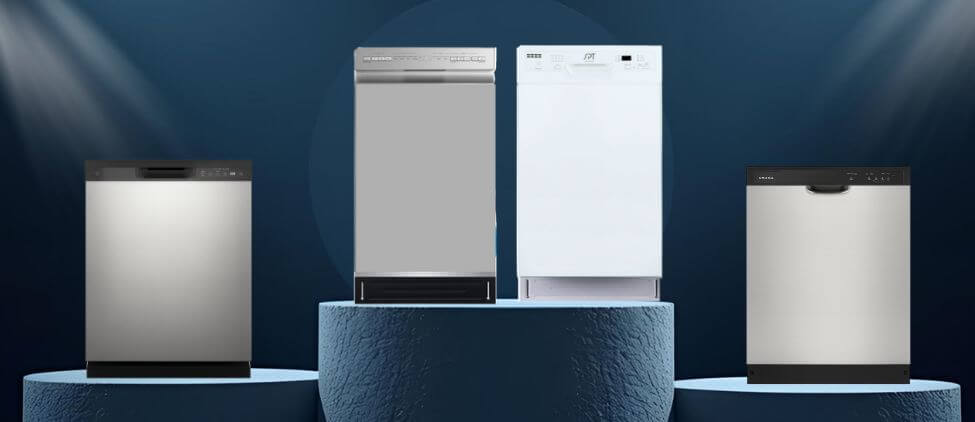Have you ever loaded up your dishwasher, pressed the Eco cycle, and then checked back three hours later only to find it’s… still running? You’re not alone. Many people hit the Eco button, thinking it’s the smarter choice (and it usually is), but then wonder why it feels like the dishwasher is taking an eternity.
Here’s the twist: Eco is designed to be longer on purpose. It’s not your dishwasher being lazy or broken; it’s actually a clever trick to use less heat, less water, and less electricity overall. Bosch, Samsung, Whirlpool, and other major brands utilize some version of Eco (sometimes labeled “Energy Saver” or “Eco Wash”) to help meet energy standards while still cleaning your dishes.
In this guide, we’re breaking down what the dishwasher Eco cycle really is, why it’s so much longer than Normal, how it saves energy, and when you should (and shouldn’t) use it. If you’ve ever been tempted to avoid Eco just because of the wait, stick around; you might change your mind.
Table of Contents
What Is the Dishwasher Eco Cycle?
“Eco” stands for Economy mode, but not in the “cheap and flimsy” sense, more like economical with resources. When you press Eco, your dishwasher runs in a way that prioritizes efficiency over speed.
- Lower water temperatures: Instead of using very hot water to blast dishes, Eco uses cooler water, which takes longer to achieve the same cleaning.
- Less water overall: It recirculates a smaller amount of water repeatedly, rather than filling and draining as often.
- Gentler drying: Eco cycles usually skip heated dry or reduce it dramatically, relying on air drying instead.
This means it might take 3 to 4 hours compared to a Normal cycle that finishes in 1.5–2 hours. But during that extra time, your dishwasher is sipping water and electricity instead of guzzling it.
For a full overview of other cycle types, you can check out our guide on dishwasher cycles and settings explained.
Why the Eco Cycle Takes Longer
Alright, here’s the part that confuses people. Eco = longer time, lower energy. But how does dragging the cycle out actually save resources?
- Lower heat = longer clean: Heating water is one of the biggest energy drains. By washing at a lower temperature, Eco avoids that spike, but needs more time to scrub dishes effectively.
- Less water = more circulation: Since Eco uses fewer gallons, it needs to recycle the water longer to dissolve food and rinse away detergent.
- Gentler drying = extended cycle: Without a heated dry, dishes require extra time to air-dry due to the use of built-in fans or residual heat.
Think of it like cooking: you can crank pasta on high heat and have it done in 8 minutes, or simmer slowly for 15 minutes using less energy. Eco is the slow simmer; it takes longer, but it’s lighter on your bills (and the planet).
How the Eco Cycle Saves Energy (and Water)
Here’s the magic part: even though Eco feels like it’s dragging on forever, it actually uses less energy overall. How?
- Lower wash and rinse temperatures → heating water accounts for up to 80–90% of a dishwasher’s total energy use. Eco washes cooler, so it avoids that big spike in electricity.
- Reduced water usage → instead of filling and draining multiple times, Eco uses fewer gallons and recirculates them longer. On some models, Eco can reduce water use by nearly half compared to Normal.
- Minimal or no heated drying → instead of blasting heating elements, Eco relies on air-drying or residual heat from the rinse.
For example, Bosch notes its Eco mode can save up to 30% energy compared to a Normal cycle. Samsung and Whirlpool have similar claims, since Eco cycles are built to meet Energy Star standards.
According to ENERGY STAR, modern dishwashers already use less than 4 gallons of water per load, and Eco cycles push that efficiency even further.
When to Use the Eco Cycle
So, when does Eco make sense? Honestly, more often than you might think. It’s ideal for:
- Daily loads with light to medium soil: Plates, bowls, and utensils from family dinners, not pots with baked-on lasagna.
- Overnight runs: Since Eco takes 3–4 hours, it’s perfect when you don’t need dishes right away. Start it before bed, and you’ll wake up to clean, efficient results.
- Families watching utility bills: Eco reduces both electricity and water usage, saving money in the long run.
- Sustainable households: If you’re trying to shrink your carbon footprint, Eco is the clear choice for most loads.
In short, Eco is the “slow and steady” cycle. It won’t win any races, but it’s the one saving you money while being kinder to the planet.
When to Avoid the Eco Cycle
Eco is great, but it’s not a one-size-fits-all setting. There are times when it’s better to skip it:
- Heavily soiled pots and pans: Stubborn grease or baked-on pasta sauce needs hotter, more aggressive cycles. Eco just isn’t strong enough.
- When you’re in a hurry: Eco can stretch to 3–4 hours, so if you need dishes for a dinner party in two hours, this isn’t your friend.
- Plastic-heavy loads: Since Eco usually skips heated drying, plastics are the first to come out wet. If you’re loading lunchboxes or Tupperware, you’ll probably still need a towel.
- Post-illness cleaning: If someone in the house has been sick, Eco won’t sanitize. Switch to a sanitize or hygiene cycle for peace of mind.
Curious why plastics always come out soggy? Our guide on why plastics stay wet in the dishwasher explains exactly what’s going on and how to fix it.
| Feature | Eco Cycle | Normal Cycle |
|---|---|---|
| Cycle Length | 3–4 hours | 1.5–2 hours |
| Water Temp | Lower (energy-saving wash & rinse) | Higher (better for tough soils) |
| Water Use | Less (2–3 gallons typical) | More (3–5 gallons typical) |
| Energy Use | Lower (saves up to 30% energy) | Higher due to hot water + heat dry |
| Drying | Air-dry or residual heat (plastics stay wet) | Heated dry (better for plastics) |
| Best For | Light/medium soil, daily family loads, overnight runs | Mixed soil levels, when speed matters |
Quick takeaway: Eco = efficiency, Normal = speed. It’s not about which is “better” overall, but which works best for the situation.
Pro Tips for Using Eco Mode
Eco mode is already efficient, but you can make it work even better with a few small tweaks:
- Run it overnight: The long cycle won’t bother you while you’re asleep, and you’ll wake up to clean dishes.
- Always use rinse aid: Since Eco doesn’t rely on heated dry, rinse aid helps water slide off, especially plastics. Check out our guide to the 6 best dishwasher rinse aids for sparkling results.
- Load properly: Don’t overcrowd or block the spray arms. With less water in Eco, placement matters even more.
- Pair with Auto Door-Open: If your model supports it, letting the door pop open at the end speeds up air drying. More on this in our Dishwasher Auto Door Open guide.
- Save Eco for everyday loads: Use Normal or Heavy cycles for grease, pots, or heavily soiled dishes.
Think of Eco as your “default” setting for daily runs; it’s reliable, efficient, and budget-friendly, as long as you’re not in a hurry.
Conclusion
So here’s the bottom line: the dishwasher Eco cycle is long on purpose. It runs cooler, uses less water, and skips heavy drying to save you energy and money. That extra time is simply the dishwasher working smarter, not harder.
Eco is the perfect choice for everyday loads, overnight runs, and anyone who wants to shrink utility bills without sacrificing clean dishes. But when you’re in a rush, cleaning greasy pots, or drying plastics, Normal or Heavy cycles will serve you better.
Think of Eco as your “slow-cooker” cycle, it takes its time, but the results are worth it for your wallet and the planet.
FAQs About the Dishwasher Eco Cycle
Why does the Eco cycle run longer than Normal?
Because it uses lower temperatures and less water. The dishwasher compensates by circulating water longer to achieve the same cleaning.
Does Eco really save money on bills?
Yes. Heating water is the biggest energy cost. By running cooler, Eco can save up to 30% energy compared to Normal.
Can Eco clean pots and pans?
Not recommended. For heavy grease or baked-on food, use Heavy or Pots & Pans cycles.
Is Eco the same as Energy Saver mode?
Pretty much, different brands call it different things. Bosch says “Eco,” Samsung uses “Energy Saver,” but the idea is the same.
Will Eco dry plastics properly?
Not usually. Since Eco avoids heated drying, plastics often come out damp.
Should I always run my dishwasher on Eco?
You can use it for everyday loads, but it’s best to switch to Sanitize or Heavy when hygiene or heavy soil is the priority.
How much water does Eco mode use vs Normal?
Most Eco cycles use 2–3 gallons, while Normal cycles average 3–5 gallons, depending on the model.
You May Also Like
Keeping Your Dishwasher in Top Shape
Keeping your dishwasher clean and running smoothly is key to maintaining its performance and extending its lifespan. Here are some helpful reads from our site to ensure your appliance stays in top condition for years to come:
- Is Pre-Rinsing Necessary? Dishwasher Myths Busted
- The Dishwasher’s Impact on Knives: What You Need to Know
- Why Does the Sink Fill Up When Running the Dishwasher?
- How Much Water Do Dishwashers Use?
- How to Clean Dishwasher Spray Arms?
Explore More Articles to Improve Your Dishwashing Skills
- Stainless Steel vs. Plastic Tub Dishwashers: Which is Better?
- First Time Using a Dishwasher? The Ultimate Beginner’s Guide!
- Dishwasher Myths: 7 Shocking Truths You Must Know!
- How to Dispose of and Recycle a Dishwasher?
- Heat Dry vs. Air Dry
WashDryDazzle is committed to delivering valuable insights and meticulously compiled lists, ensuring you discover the best products to meet your requirements. We also provide extensive dishwasher guides and expert education to help you maintain proper appliance care and management.



